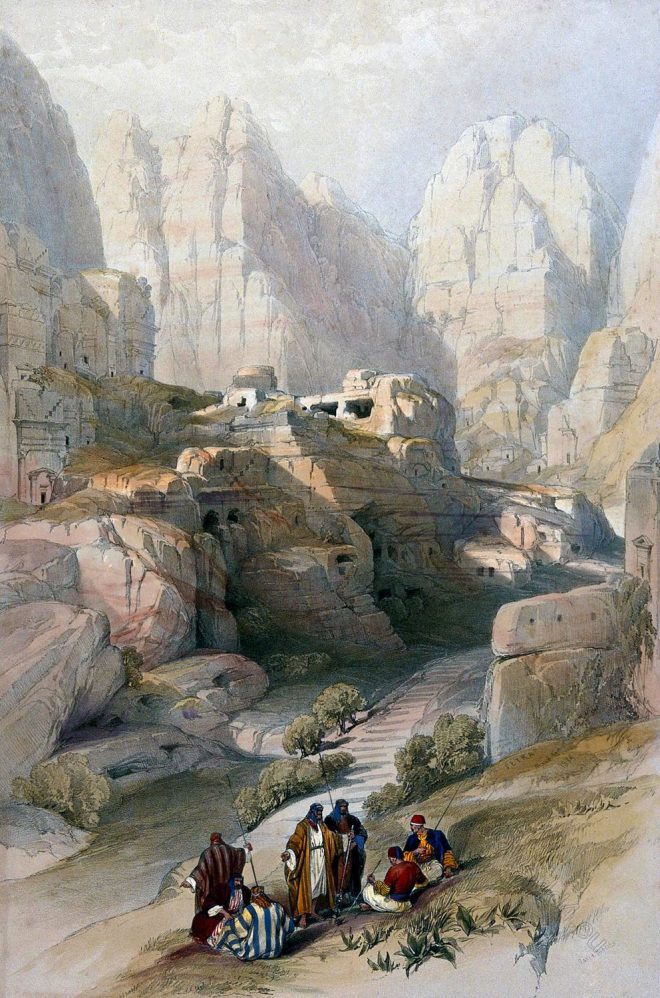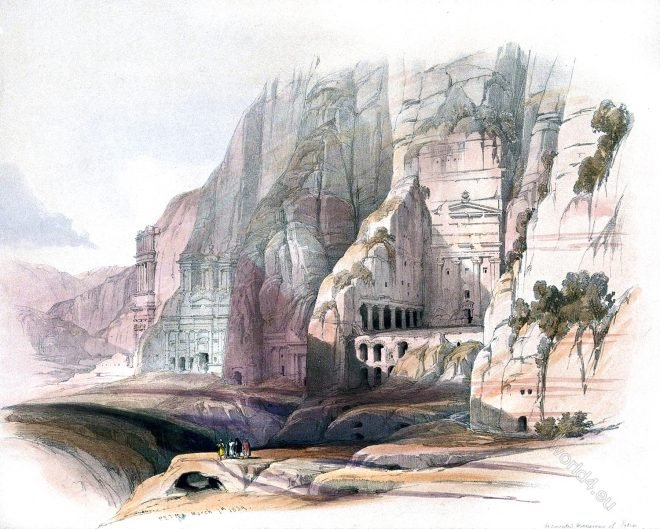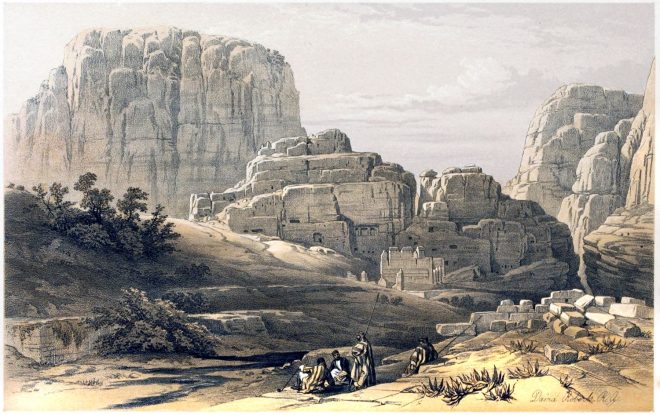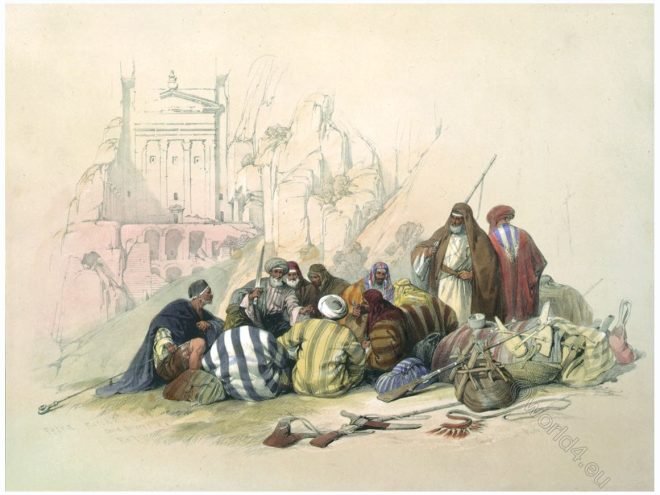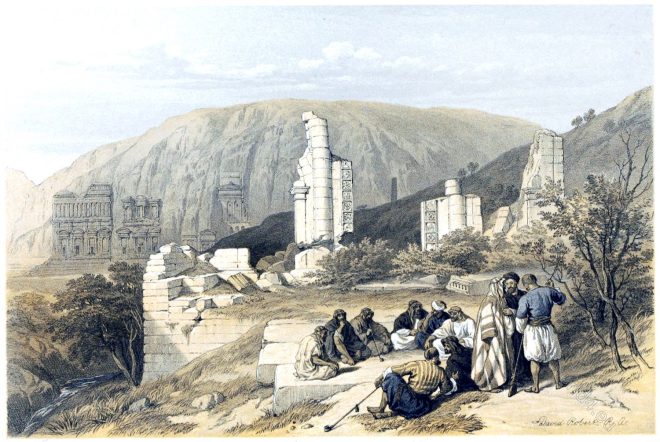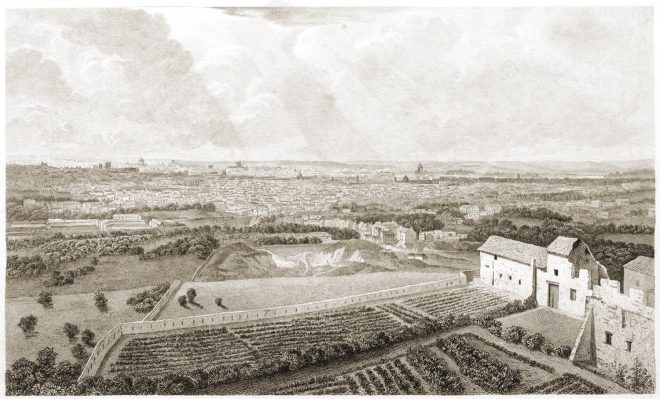In the valley which conducts to Petra, and which lies outside the “Chasm,” is the chief Cemetery.
Category: 19th Century
Men sitting to smoke by a ravine at Petra, Jordan.
This view is taken from the Theatre, and represents the Excavations in the opposite cliffs; and the continuation of the chief eastern entrance to the City.
The Perfection and beauty of the coconut palm at Sri Lanka.
In no part of the world does the coconut palm attain such perfection and beauty as in Ceylon
Excavations at the Eastern End of the Valley, Petra.
The architects of Petra had evidently a strong sense of beauty. The City, in its pomp and animation, have formed a combination altogether unrivalled.
The Acropolis (Kusr Faron) Lower End of the Valley. Petra 1839.
It seems to have formed the approach to the Palace, or pile of building in the centre, called by the Arabs Kusr Faron (Pharaoh’s Castle).
Conference of Arabs at Wady Moosa, Petra March 6th 1839.
The Engraving gives a conception of the manner in which the more serious affairs of the natives are conducted.
Remains of a triumphal arch at Petra. Jordan 1839.
The Arch-way in the Engraving, in the lower Roman style, is little more than a heap of stones.
Travellers at the tomb of Aaron, on the summit of Mount Hor, near Petra.
Among the hills in the approach to Petra, the most striking is Mount Hor, from its boldness and height, and still more, from its connexion with Scripture.
Paris Montmartre. View from the tower of the telegraph, 1819.
In the 19th century, the still rural Montmartre attracted numerous artists who could live a freer and cheaper life here than in the city centre.
View of the Hudson Highlands. Crow Nest, from Bull Hill, West Point.
Crow Nest is one of the most beautiful mountains of America for shape, verdure, and position


